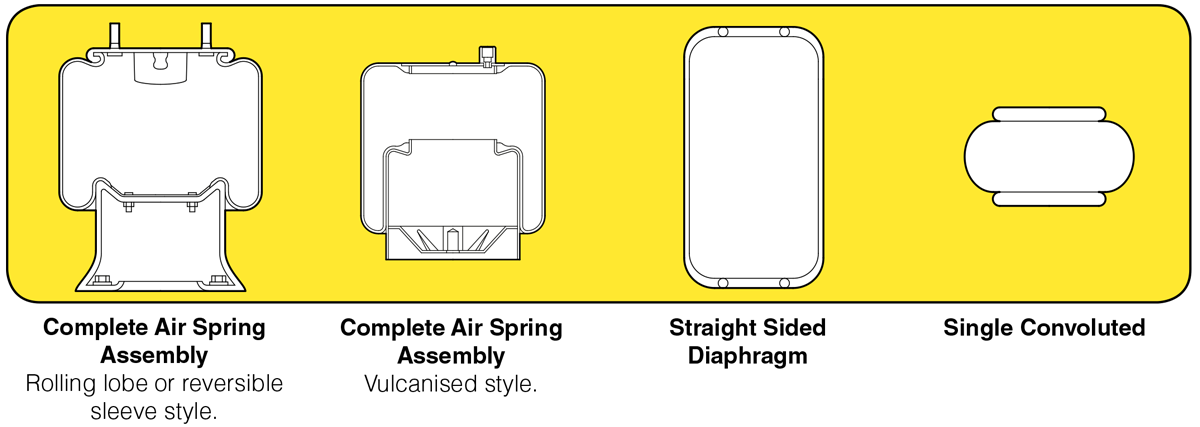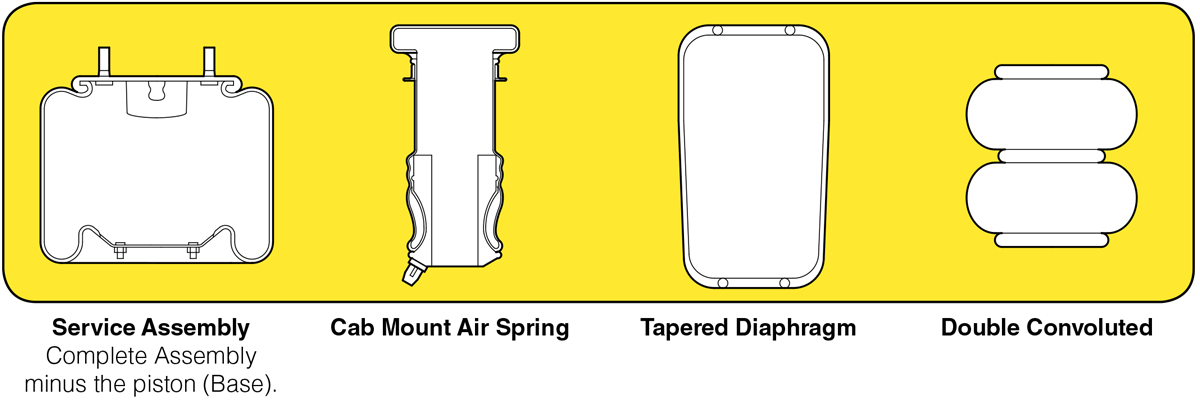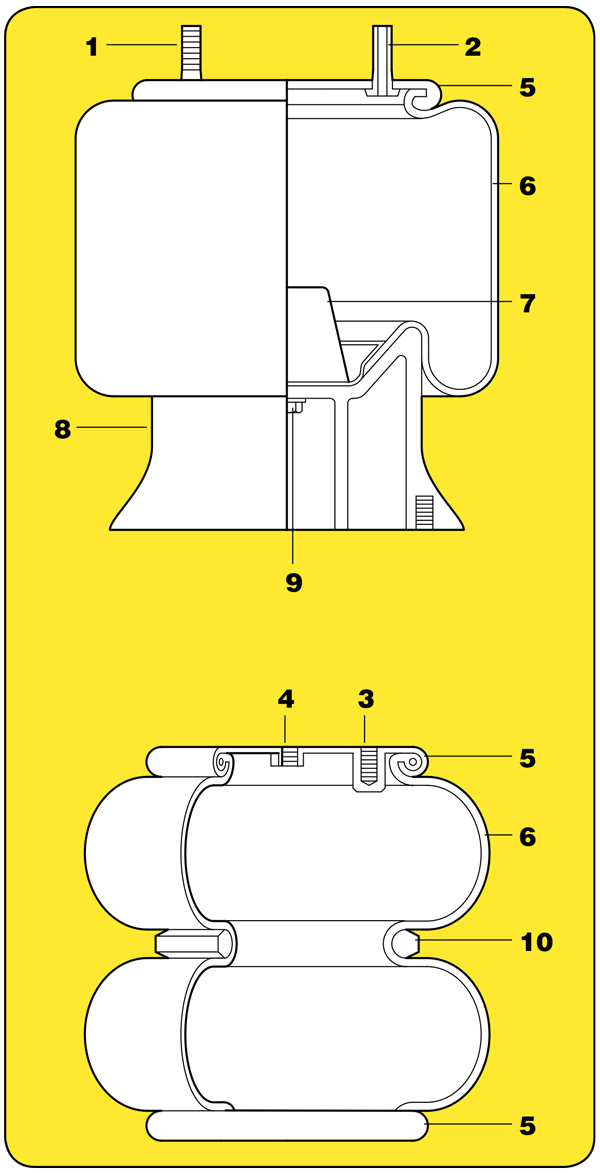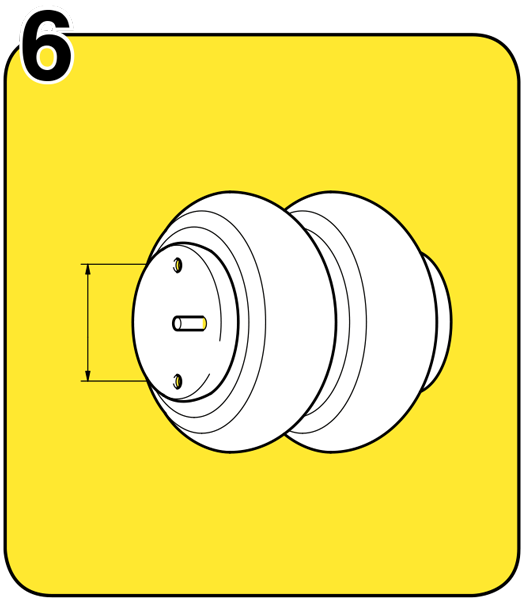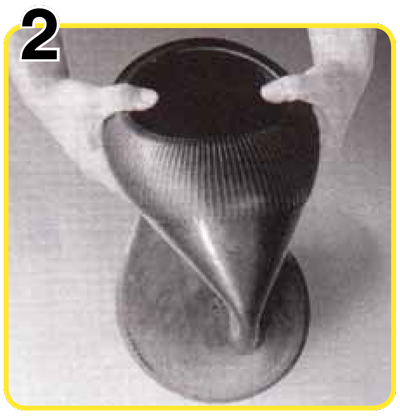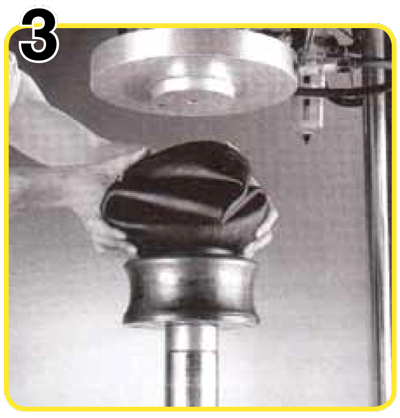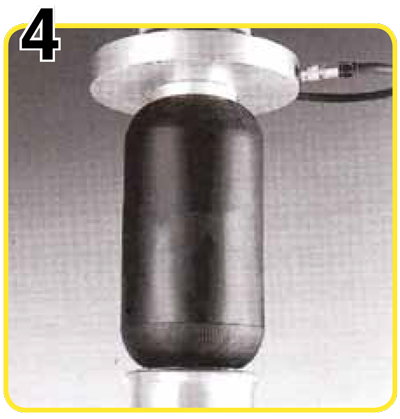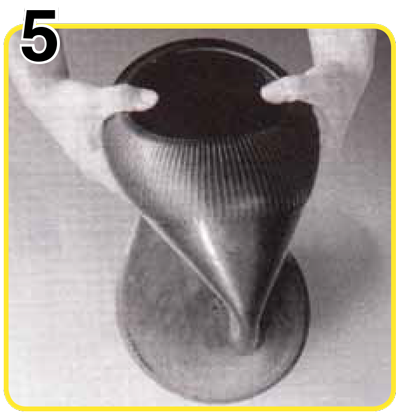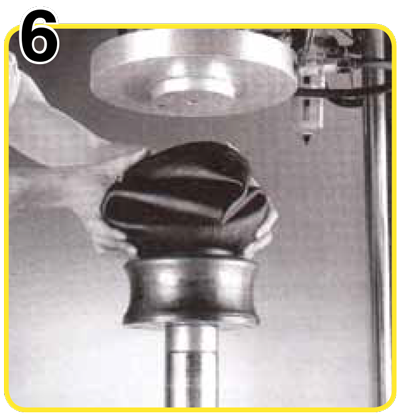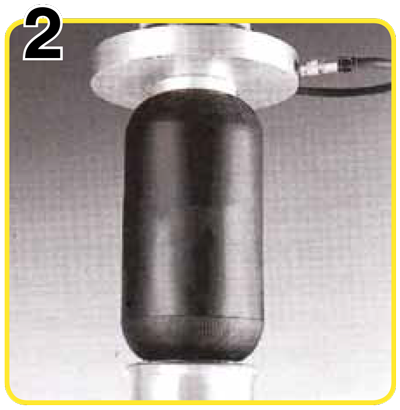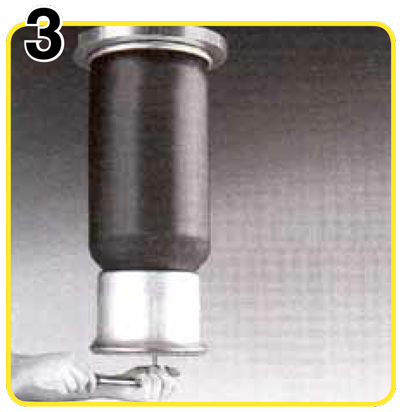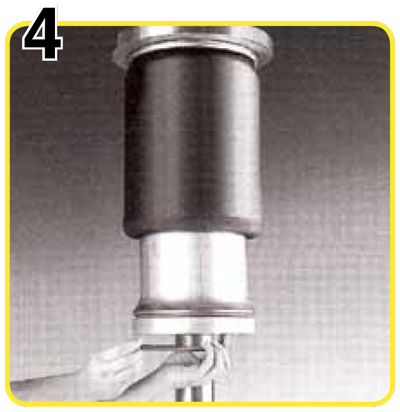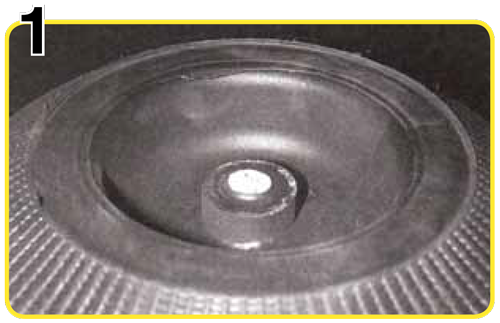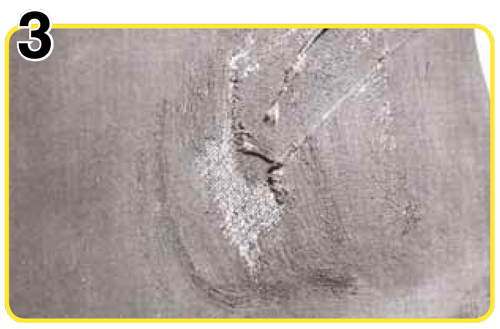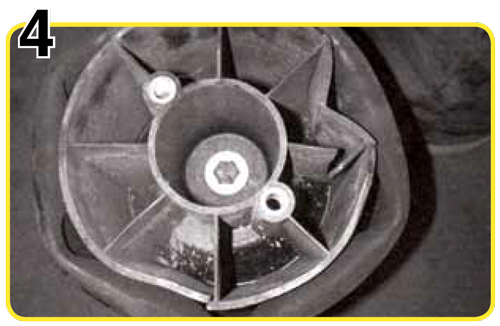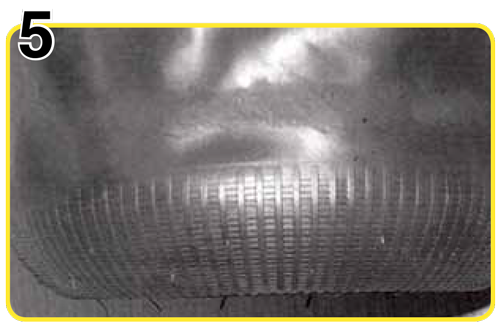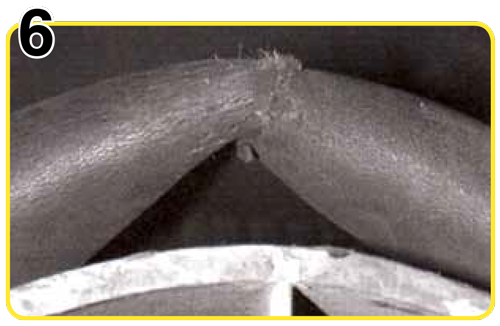Airsprings - Quick Guide
Air Spring Components
- 1. Stud
A permanent part of the bead plate assembly used to attach the air spring to the suspension. - 2. Combination Stud
This provides a dual purpose of mounting the air spring to the suspension and providing an air entrance. - 3. Blind Nut (Threaded Hole)
A permanent part of the bead plate assembly providing an alternative mounting system to the Stud. - 4. Air Fitting Hole
A tapped hole providing air entrance for the part. - 5. Bead Plate (Top Plate)
Permanently crimped onto the bellows, diaphragm during manufacture. - 6. Bellows
The heart of the airspring. Includes at least four ply, or layers of material - an inner layer, two ply of cord reinforced fabric and an outer layer. - 7. Bumper (Bump Stop)
A solid moulded rubber fail safe device used on many suspension applications. Prevents excessive damage to the vehicle and suspension in the case of sudden air pressure loss. - 8. Piston
The lower section of the airspring made from aluminium, steel or composite material ie. plastic. Provides lower mounting arrangement for the airspring in the form of threaded holes or studs. - 9. Piston Bolt
Attaches the piston to the bellows assembly and in some cases is extended to serve as a means of attaching the airspring to the suspension. - 10. Girdle Hoop (Centre Ring)
A ring between the convolutions of the convoluted type air spring, helps provide stability in the part.
Air Spring Identification
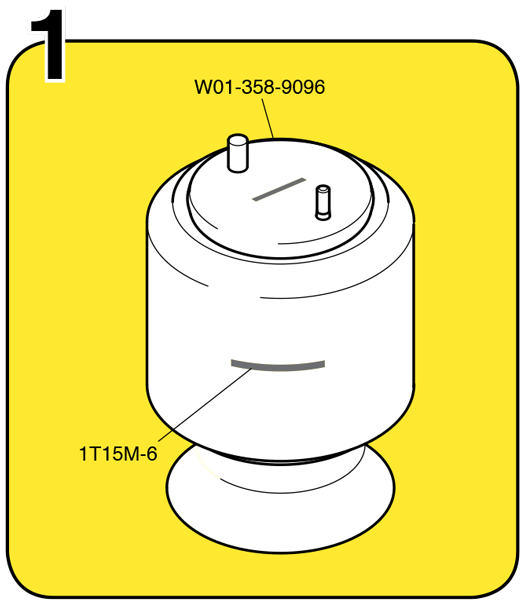
Read Part Numbers & Bellows Numbers
The first step to identifying an airspring for replacement is to read the part number on the label attached to the bead plate ie. W01-358-9096. If the number is illegible read the bellows number which is normally moulded in to the rubber. A Style number such as IT15M-6 or 22 would tell exactly which bellows is needed so therefore bypass sections 2 & 3. If the bellows number is illegible then determine the style by comparing it to the illustrations in this guide. Proceed to section 2 if rolling lobe assembly or section 3 for convoluted.
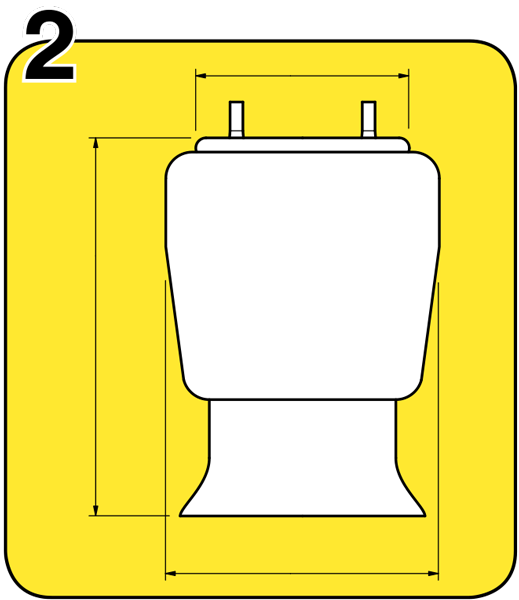
Rolling Lobe Style
Measure the bead plate diameter and the moulded uninflated diameter of the rubber bellows and compare this with the rolling lobes illustrated in this guide until a match is found. Please note that the molded diameter can increase slightly with years of service. Then measure from the bottom of the piston to the top of the bead plate when the part is (uninflated) and extended. Next, find the same or similar measurement in the rolling lobe section that was previously determined. When this has been done go to section 4.

Convoluted Style
First determine whether the airspring is a single, double or triple convoluted style by comparing it to the illustrations in this guide. Then measure the bead plate diameter and the diameter of the bellows across its widest area (uninflated) and compare these dimensions with those given in the convoluted section. Once a match has been made proceed to section 4.
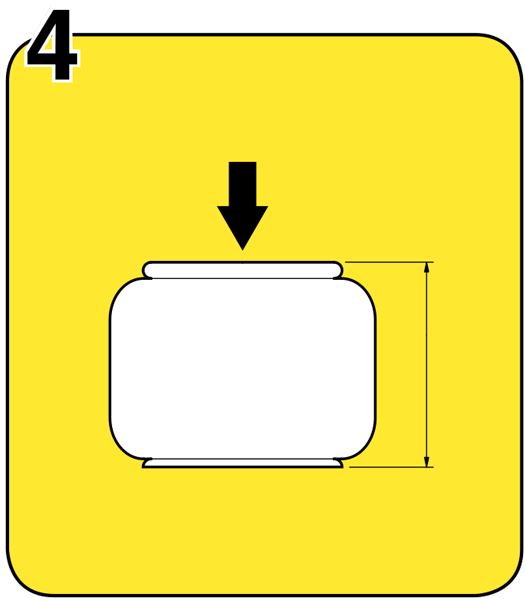
Bump Stop Fitted
Many airsprings contain a rubber bumper inside the spring. To determine if one is present compress the spring to its minimum height and measure from the bottom plate or piston to the top of the bead plate. Compare this compressed height with the illustrations in the appropriate bellows section that was determined in either the rolling lobe or convoluted sections. Then proceed to section 5 if you have rolling lobe style or section 6 if you have a convoluted style.
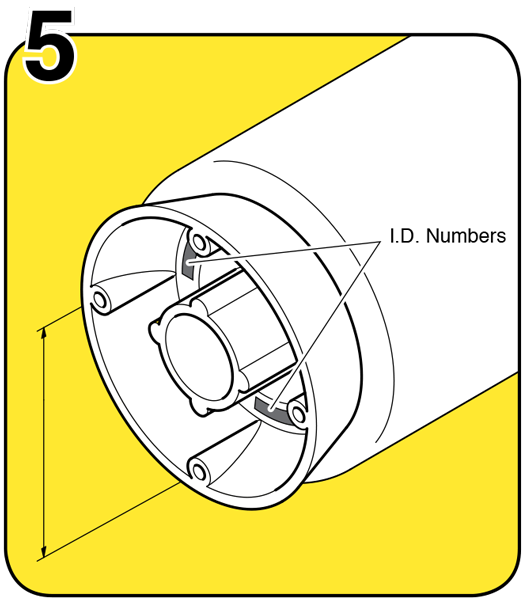
Rolling Lobe (Top Plate & Piston)
The same bellows are used with many different combinations of top plates and pistons, so please check closely. Look at the fixtures on the top plate. Note how the air is fed into the airsprings. Is it part of one of the studs or is it completely separate. Measure the centres of the fixation studs or bolts. Once this has been done look through the appropriate section previously determined and look at the column marked “Top View” until the correct top plate is selected.
Removing an Old Air Spring
- 1. Jack up the vehicle securely as high as possible. Make sure it cannot fall off its supports.
- 2. Let the air out of the air spring system.
- 3. Remove the old air spring.
- 4. Please note that for conical rolling lobe air springs, the narrow end must be placed on the piston.
Installing a New Airsprings Rolling Lobe Air Spring without Metal Parts
- 1. Clean the bead seats on the clamping plate and spring piston. Check that the mounting hardware is free of burr and is not corroded (replace if necessary). Apply a soap solution or an approved fitting lubricant (not grease) to the bead seat of the piston.
Installing a New Airsprings Rolling Lobe Air Spring with Top Plate
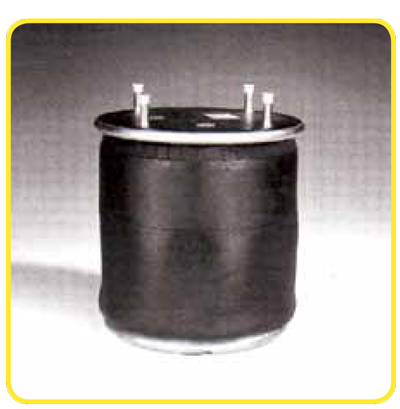
The bolts or threads on complete Airspring.com replacement air spring normally match the vehicle’s hole pattern.
The Piston and the bottom clamping plate should be cleaned if the piston is to be reused.
Main causes for premature air spring failures – and how to prevent them
Overtorque
Cause of Failure:
Fit the top crimping plate of the air spring to the chassis / frame of the vehicle. Press the bottom bead into an oval shape and push the bottom clamping plate through.
Recommendation:
Apply general installation instructions. Review drawing or product warning label for proper assembly torque. Do not use an air wrench for installation.
Overextension
Cause of Failure:
The air spring is operated outside the maximum rebound range as a result of unrestrained (missing end stop) or excessive axle travel (defective / improperly adjusted height levelling system or wrong air spring). The abuse may result in separation of the bellows from upper or lower mounting parts.
Recommendation:
Check and/or adjust height levelling system, shocks, end stops and air springs specifications to prevent air spring travel of exceeding the max recommended height.
Abrasion
Cause of Failure:
Bellows in contact with other components (e.g. defective parts) of the vehicle or foreign objects (e.g. dirt, stones) that accumulate at the piston/ rolling part of the bellow. They may rub through the bellows during spring deflection.
Recommendation:
Avoid contact between bellows and any other part of the vehicle. Check air springs periodically / remove foreign objects from rolling part of bellows.
(Warning: Do not use solvents for washing)
Overload
Cause of Failure:
When overloading the vehicle the height levelling valve will open to adjust vehicle height by increasing the pressure inside the air spring up to max system pressure available. The improper usage of the air spring system outside the recommended pressure range may cause deformation or damage to the bellows, piston and/ or bead plate.
Recommendation:
Avoid overloading of the vehicle. Check air spring specifications for max load capacity.
Contamination
Cause of Failure:
Air spring bellows are not resistant to solvents, hydraulic oil or lubricants. A permanent exposure to chemicals will cause premature failure of air spring system.
Recommendation:
Check the air spring system periodically. Avoid too much oil in the air supply lines. Remove lubricants from the bellows. Do not use mineral oil based cleaners. Do not use any solvents.
Low Pressure
Cause of Failure:
When operating the air spring system without internal air pressure, it prevents the bellows from rolling uniformly over the piston / girdle hoop, instead it may fold. Permanent operation without internal air pressure will increase wear of the bellows significantly.
Recommendation:
Avoid operating air spring system without internal air pressure. (Inflate air springs before driving) Check periodically the air supply lines for leaks. Examine the bellows for development of fold.

